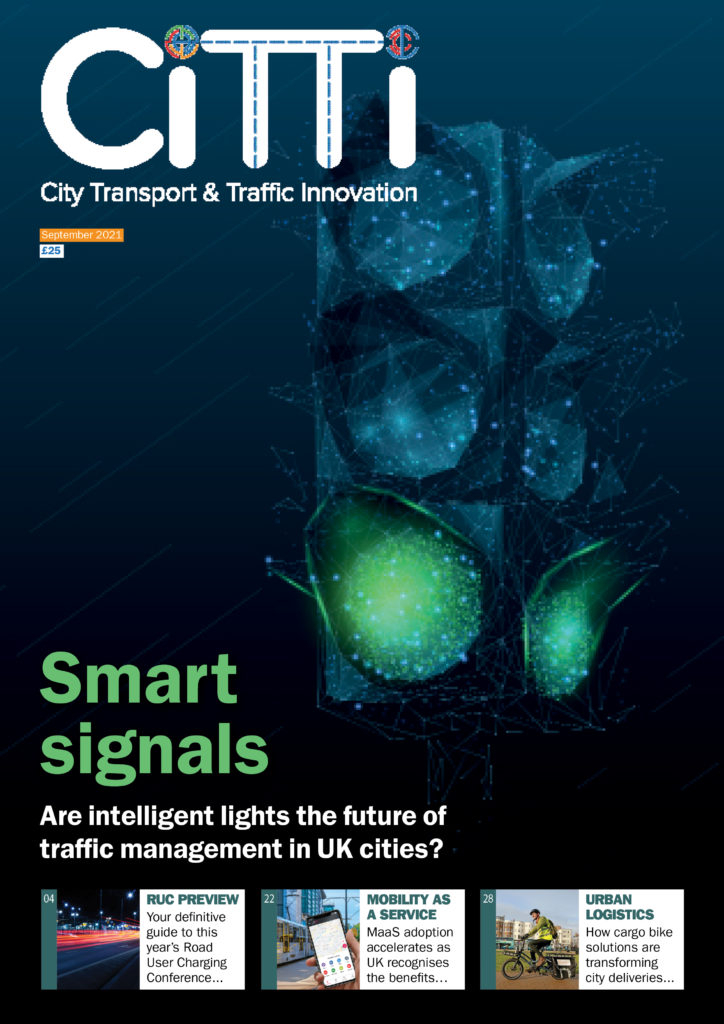In the first of two special extended interviews with traffic professionals on the technological evolution of traffic signals across the UK, Katie Searles speaks to Irfan Shaffi, operational control manager at Transport for London (TfL), about the capital’s use of ‘smart’ traffic lights…
What challenges are there in managing London’s traffic signals?
We have 6,300 [traffic signals], of which 5,000 are under computer control and continually being optimised from our data centres. It is a hugely challenging task in the face of a shifting city because no single day is ever the same. There’s not only events, such as the marathon, but also demonstrations, other official functions, as well incidents such as bus breakdowns, road traffic accidents, road works and burst water mains. All of that contributes to this humongous challenge to try to keep everything moving. What we’re doing now is trying to make much better use of technology. That’s where we’re headed with the tools we’re developing.
One of the tools TfL is developing is Sitraffic Fusion, an adaptive traffic management solution, with Siemens Mobility. Why did you opt to work with Siemens?
Siemens provides an excellent legacy set of developer skills. It’s got a proven track record in this industry and knowledge of the problem domain, i.e. managing a city, as well as an understanding of London’s challenges. Siemens also has a hunger that matches ours for making a massive step forward and is extremely enthusiastic about working with us. It’s not every day a city like London comes knocking on your door.

In addition to congestion reduction, what other benefits will Sitraffic Fusion provide?
London, like many cities, has air quality challenges. It’s a mayoral priority to improve the situation, so developing tools like this one with Siemens gives us a massive leg up in being able to manage all transport modes better. That doesn’t just mean making it easier for people to drive around, it also means making it easier for people to walk and cycle. Those sustainable modes play an enormous part in helping to improve air quality.
The tools we’re developing will give TfL the ability to be entirely policy responsive and contribute to improving air quality by making it easier, quicker and more convenient for people to use sustainable modes. Every city in the world is waking up to the fact that policies need to be shaped around dealing with environmental challenges.
That doesn’t mean we should penalise vehicle drivers, but maybe start to address the imbalance, because the vast majority of cyclists and pedestrians travelling around cities do see an imbalance. Our cities are very heavily motor dominated. That’s part of the reason why we are where we are environmentally.
Sitraffic Fusion will be able to optimise better for cyclists and pedestrians. It’ll enable us to give priority where it’s deemed appropriate and necessary. We’re creating that tool set to enable us to deliver whatever we’re asked to.
Is deployment of solutions such as Sitraffic Fusion a way to ensure that a potential post-pandemic car-led recovery is managed?
The reality is that the tools we’re delivering with Siemens will only be fully deployed in 2022/23, so we’re still a way off. But our existing tool sets enable us to carry out elements of that optimisation to help people get around using sustainable modes. We’ve already got an amazing bus priority system. I cycle a lot and I watch buses, so I know that if I can keep up with that bus I’m going to get through that. The system is that reliable, that effective and that reactive.
As Sitraffic Fusion will not be rolled out until 2022/23, what are you looking to learn from testing of the system?
It is very much in development. Right now we have got a few sites in southwest London running on this system. We’ve already proven the basics – the communications literally started from the ground up. We need to test every single thing because everything has safety implications. We have tested all the communications and we’re now on to the optimisation – that’s the really clever stuff, where the sensors feed data back into the computer systems, which carry out their decision making and calculations very, very quickly in volume. It’s all up in the cloud and future proofed. All that is happening right now on those sites. But we need to put those sites through their paces and introduce bus priority to make sure it works as expected or better.
The capability will grow at a small subset of sites over the next year or so, and then we’ll enter the deployment phase where we’ll have the solution running at 10 or 15 sites. Then it becomes a question of how to ramp that up to 5,000 sites across London where the background architecture is different. We’ve got computers controlling London at the moment, but that concept won’t exist in the new system because it’ll all be up in the cloud. So we need to find ways of migrating it that doesn’t throw London into turmoil and also enables our control centre to carry on running and managing the road network.
How important is the data you receive from these sites and the system itself?
Data is possibly the most important thing, not only data we get out of the system but also the data we put in. We’re building an engine here, and the engine will only work if you’re giving it good quality fuel – good quality data.
We’ve got to be able to give the system data through its operation. It’ll generate a lot of data – we’re extremely data rich. But in terms of what we do with that data, not only will it inform our future decision making, we also absolutely intend to publish a lot of the data. One thing we know categorically within TfL is that the more data you put out, the more the industry itself can help us deal with our transport challenges.
We’ve got open data, open API and data feeds (we’ve got over 6,000 subscribers to those APIs). Then you have app developers consuming that data who then help people move around the city using our data. We don’t necessarily do all the heavy lifting, but systems like the one we’re developing now are purpose designed to make congestion data available, incident data available, and so on.
Would it be fair to describe London as a ‘living lab’ for future solutions that are adopted by transport authorities in other cities?
The living lab is exactly what we call our trial sites in London. We’ve got incredibly strong and wide connections in terms of our peer city operators, whether as close as Bristol or as far as Perth, Australia, and everywhere in between. We’re extremely open and very big on knowledge sharing. People keep extremely close tabs on what London does. They realise that our challenges are very similar to theirs and that the tool sets should be compatible across different landscapes, even if you’re in a different continent.
An abridged version of this interview appears in a wider feature on the technological evolution of traffic signals in the September issue of CiTTi magazine, which you can read online now!
You can also read a special extended interview with David Watts, ITS engineer for Transport for Greater Manchester, here.






